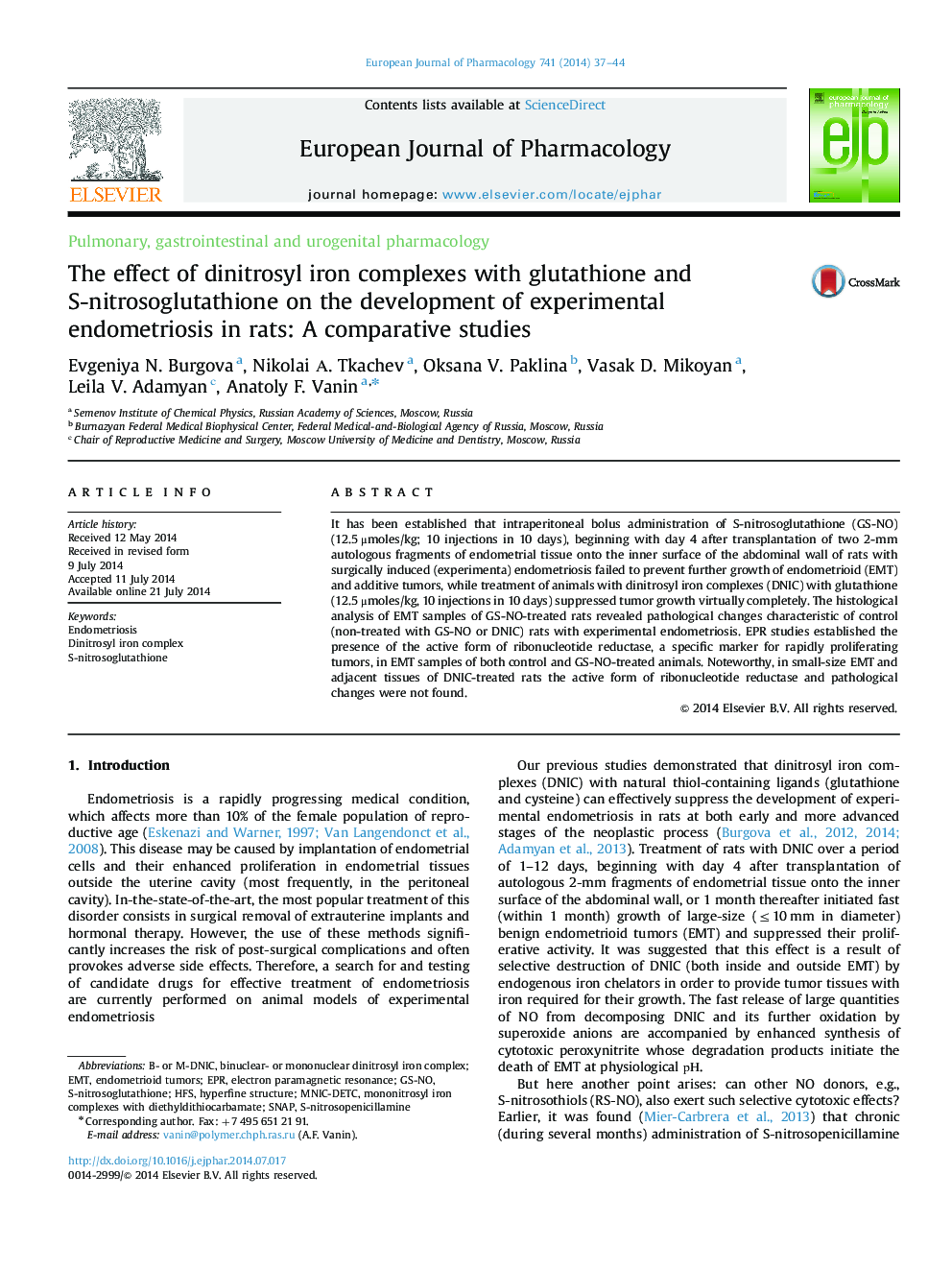| Article ID | Journal | Published Year | Pages | File Type |
|---|---|---|---|---|
| 5827657 | European Journal of Pharmacology | 2014 | 8 Pages |
It has been established that intraperitoneal bolus administration of S-nitrosoglutathione (GS-NO) (12.5 μmoles/kg; 10 injections in 10 days), beginning with day 4 after transplantation of two 2-mm autologous fragments of endometrial tissue onto the inner surface of the abdominal wall of rats with surgically induced (experimenta) endometriosis failed to prevent further growth of endometrioid (EMT) and additive tumors, while treatment of animals with dinitrosyl iron complexes (DNIC) with glutathione (12.5 μmoles/kg, 10 injections in 10 days) suppressed tumor growth virtually completely. The histological analysis of EMT samples of GS-NO-treated rats revealed pathological changes characteristic of control (non-treated with GS-NO or DNIC) rats with experimental endometriosis. EPR studies established the presence of the active form of ribonucleotide reductase, a specific marker for rapidly proliferating tumors, in EMT samples of both control and GS-NO-treated animals. Noteworthy, in small-size EMT and adjacent tissues of DNIC-treated rats the active form of ribonucleotide reductase and pathological changes were not found.
